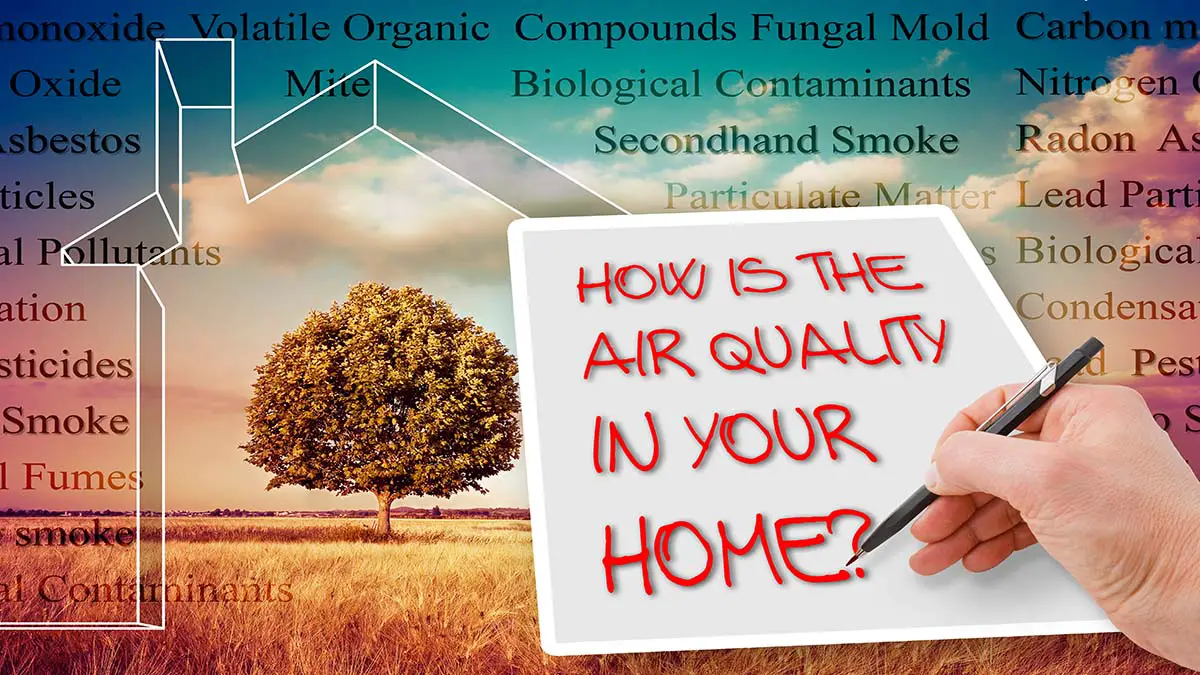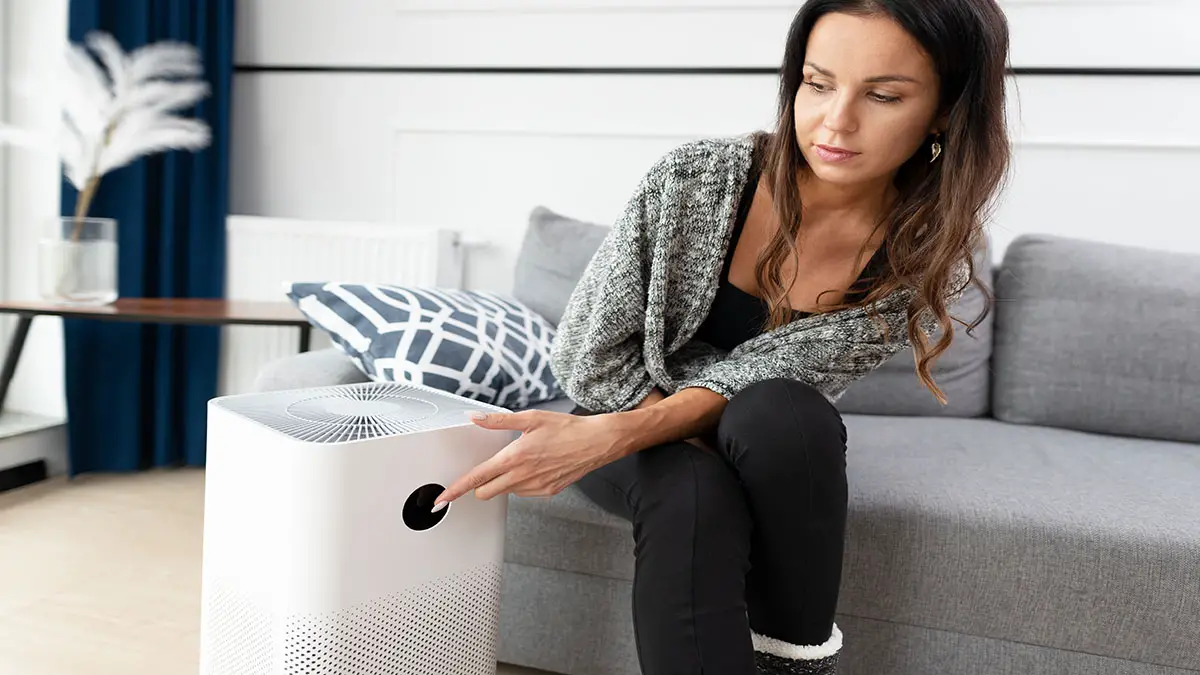Determining your room’s best air purifier size ensures the best possible air cleaning performance. With so many options available in the market, it can be overwhelming to choose the right one.
An air purifier that is too small for your room size may not be able to clean the air effectively, while an oversized air purifier may consume more energy than necessary.
What Size Air Purifier Do You Need?
Air purifiers typically provide information about their square footage coverage. To effectively clean the air in a room, you should consider a unit covering the specified square footage twice every hour. For allergy sufferers, choosing an air purifier with a coverage that can clean the air in the room four times every hour is recommended.
An example is an air purifier that provides coverage of 1000 square footage in one hour. It can cover an area of 500 square footage twice per hour for general air purification or 250 square footage four times per hour for individuals who suffer from allergies.
Read More: Best Air Purifiers & Reviews
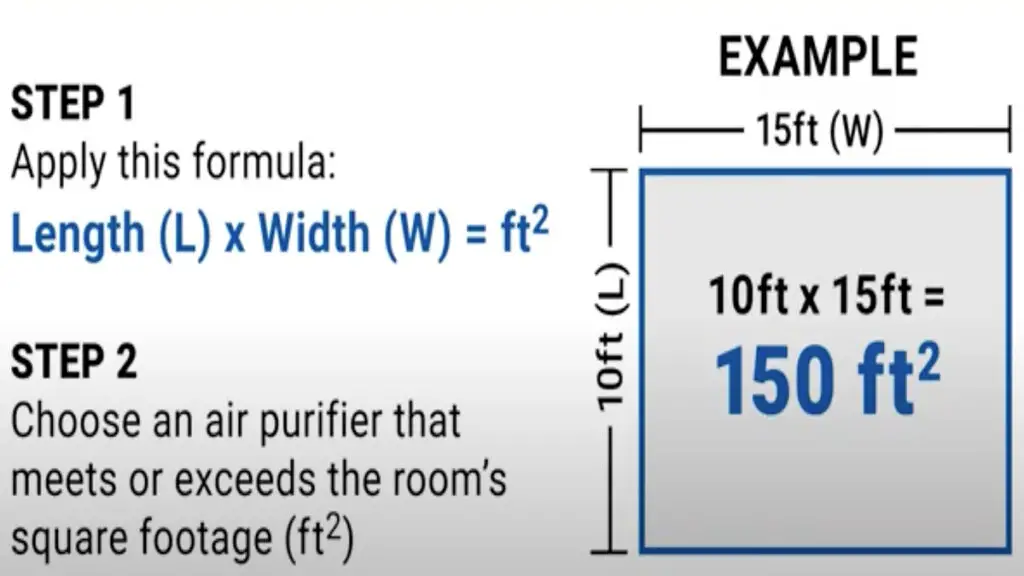
To determine the right size air purifier for your room, you need to consider the square footage of your room and the air purifier’s Clean Air Delivery Rate (CADR). The CADR measures how much clean air an air purifier can deliver in a specific period. The higher the CADR, the more effective the air purifier is at cleaning the air.
When shopping for the best air purifier for mold, bacteria, and viruses, look for one with a CADR that matches the square footage of your room. This will ensure that the air purifier can clean the air effectively and efficiently.
Understanding Air Purifiers
An air purifier can be an excellent investment if you want to improve your indoor air quality. But before you buy, it’s important to understand how air purifiers work and what features to look for.
Clean Air Delivery Rate (CADR)
One of the most important factors to consider when choosing an air purifier is the Clean Air Delivery Rate (CADR). This rating tells you how quickly the purifier can clean the air in a room. The higher the CADR rating, the faster the air purifier can clean the air.
Air Changes Per Hour (ACH)
Another important factor is the Air Changes Per Hour (ACH). This metric tells you how often the air purifier can clean the air in a room per hour. The higher the ACH, the more the air in the room is cleaned per hour.
HEPA Filters
HEPA filters are a common type of filter used in air purifiers. These filters capture particles as small as 0.3 microns, including allergens, dust, and pet dander. Look for an air purifier with a HEPA filter to remove these particles from your air.
Activated Carbon Filters
Activated carbon filters are another type of filter used in air purifiers. These filters are designed to capture odors and chemicals in the air. If you want to remove odors or chemicals from your air, look for an air purifier with an activated carbon filter.
PCO Technology and Ionizers
Some air purifiers use PCO (photocatalytic oxidation) technology or ionizers to clean the air. PCO technology uses UV light to break down pollutants, while ionizers emit negatively charged ions that attach to pollutants, making them easier to capture in the air purifier’s filters. While these technologies can be effective, they can also produce ozone, harming your health.
CFM
The air purifier’s Cubic Feet per Minute (CFM) rating tells you how much air the purifier can move in a minute. The higher the CFM, the more air the purifier can move, which can help it clean the air more quickly.
Significance of Room Size
The size of the room is an important factor to consider when choosing an air purifier. The larger the room, the larger the air purifier should be. If the air purifier is too small for the room, it will not be able to clean the air effectively.
To determine the appropriate size of the air purifier for your room, you need to measure the room’s square footage. You can do this by measuring the length and width of the room and multiplying the two numbers together. For example, a room that is 10 feet by 12 feet would have a square footage of 120 square feet.
In addition to square footage, you also need to consider the room’s height. A room with high ceilings will require a larger air purifier than one with low ceilings. This is because the air volume in a room with high ceilings is greater than in a room with low ceilings.
To determine the air volume in a room, you need to multiply the room’s square footage by the ceiling height. For example, a room 10 feet by 12 feet with a ceiling height of 8 feet would have a volume of 960 cubic feet.
Room Size
The first thing you need to determine is the size of your room. Measure the length and width of your room and multiply the two numbers together to get the square footage. Most air purifiers will have a recommended room size listed on the packaging or in the product description, so make sure you choose one that is appropriate for the size of your room.
Air Changes Per Hour
Next, you must consider how many times per hour you want the air in your room cleaned. This is known as air changes per hour (ACH). The higher the ACH, the more often the air in your room will be cleaned. ACH is determined by dividing the cubic feet of air in your room by the air purifier’s cubic feet per minute (CFM).
Too Big
Choosing an air purifier that is too big for your room can waste money. Not only will you spend more money on the initial purchase, but you will also spend more money on electricity bills. A larger air purifier will consume more energy than a smaller one, even running on a lower setting.
Too Small
Choosing an air purifier that is too small for your room can also be a waste of money. A small air purifier won’t be able to clean the air effectively, so you will need to run it for longer to achieve the same level of air quality as a larger one. This will result in higher electricity bills and a shorter lifespan for the air purifier.
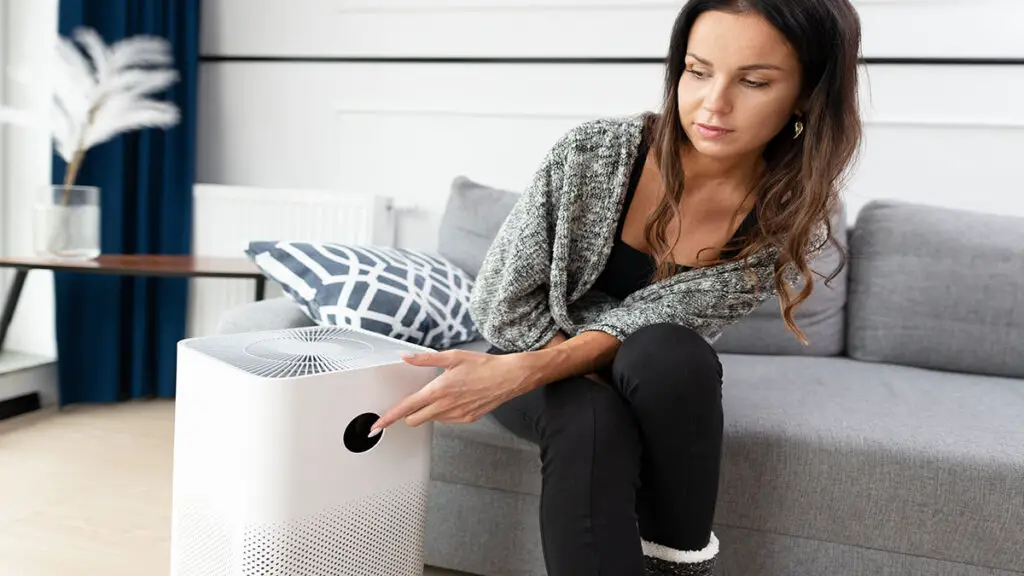
Air Quality and Contaminants
When selecting an air purifier for your room, it’s essential to consider the air quality and contaminants present in the room. Indoor air quality can be affected by various pollutants, including pollen, dust, allergens, pet dander, germs, chemicals, smoke, cigarette smoke, and odors.
One of the most common indoor air pollutants is dust, which can cause allergies and respiratory problems. Pet dander is another common allergen that can cause respiratory issues for some people. Pollen is also a significant allergen that can cause sneezing, runny nose, and itchy eyes.
Air purifiers can help remove these pollutants from the air, making it easier for you to breathe. Some air purifiers specifically target certain contaminants, such as smoke and odors.
For example, if you are a smoker or live with a smoker, you may want to consider an air purifier that is designed to remove cigarette smoke and odors from the air.
Chemicals are also a significant concern when it comes to indoor air quality. Many household products, such as cleaning solutions and air fresheners, contain chemicals that can be harmful when inhaled. An air purifier with a HEPA filter can help remove these chemicals, making your home a safer place to breathe.

Air Purifiers for Different Rooms
When choosing an air purifier, it’s important to consider the size of the room it will be used in. A purifier that’s too small won’t be effective, while one that’s too large will waste energy and money. Here’s a guide to help you determine the correct size air purifier for different rooms in your home or office:
Bedroom
The bedroom is where you spend a lot of time each day, so choosing an air purifier that can handle the space is important. A purifier with a CADR (Clean Air Delivery Rate) of at least 100 is recommended for a typical bedroom. A cleaner with a HEPA filter can remove allergens and other pollutants from the air, promoting better sleep and overall health.
Living Room
The living room is often the largest in the house and can be a gathering place for family and friends. A cleaner with a CADR of at least 200 is recommended for a typical living room. Look for a purifier with a True HEPA filter to remove allergens, smoke, and other pollutants from the air.
Office
An air purifier can help improve the air quality in your office, reducing the risk of illness and increasing productivity. A typical office requires a purifier with a CADR of at least 100. Look for a purifier with a HEPA filter to remove dust, pollen, and other pollutants from the air.
Home Office
Having clean air in your workspace is important if you work from home. A purifier with a CADR of at least 100 is recommended for a typical home office. Look for a cleanser with a HEPA filter to remove allergens and other pollutants from the air.
Kitchen
The kitchen is where cooking fumes and odors can accumulate, so choosing an air purifier to handle the space is important. A purifier with a CADR of at least 100 is recommended for a typical kitchen. Look for a purifier with a pre-filter and activated carbon filter to remove cooking odors and other pollutants from the air.
Dining Room
The dining room is often connected to the kitchen and can be where family and friends gather for meals. A purifier with a CADR of at least 100 is recommended for a typical dining room. Look for a purifier with a HEPA filter to remove allergens and other pollutants from the air.
Remember to measure the size of the room before purchasing an air purifier, and choose a cleaner with a CADR that matches the size of the room. With the right air purifier, you can breathe easily and enjoy cleaner, healthier air in your home or office.
Air Purifiers and Health
Air purifiers remove pollutants from the air, including allergens, dust, pet dander, and other harmful particles. They can improve indoor air quality and help reduce the risk of respiratory problems. If you have allergies, asthma, or pets, you may benefit from using an air purifier in your home. 1
Air purifiers work by using a filter to trap particles in the air. Some air purifiers use UV-C light or ionizers to kill bacteria and viruses. It is important to choose an appropriate air purifier for the size of your room. A purifier that is too small for the room will not be effective, while one that is too large will waste energy and money.
When choosing an air purifier, consider the room’s size, the filter type, and the noise level. HEPA filters are the most effective at removing particles from the air, but they can be expensive to replace. Activated carbon filters can help remove odors and chemicals from the air. Look for an air purifier with a quiet fan if you plan to use it in a bedroom.
An air purifier can be beneficial, especially for people with allergies or asthma. Air purifiers can remove allergens from the air, such as pollen, dust mites, and pet dander. They can also help reduce the risk of respiratory infections by removing bacteria and viruses from the air.
Choosing the Right Air Purifier
Consider a few things when selecting the right air purifier for your room. The most important factor is the size of your room. A purifier that is too small for your room will not be effective, while a purifier that is too large will be a waste of money.
To determine the right size air purifier for your room, you need to measure the square footage of your room. This can be done by multiplying the length and width of your room.
Once you have determined the size of your room, you can compare different air purifiers to find the one that is right for you.
There are many different brands and models of air purifiers on the market, so it can be overwhelming to choose the right one. One way to compare air purifiers is to look at consumer reports. These reports provide unbiased information about the performance of different air purifiers.
One highly-rated air purifier is the IQAir HealthPro Plus. This purifier is recommended by the American Lung Association and is certified by the Association of Home Appliance Manufacturers. It has a high-performance filter can remove particles as small as 0.3 microns, making it effective at removing allergens, pollutants, and other harmful particles from the air.
When selecting an air purifier, it’s also important to consider the cost of replacement filters. Some air purifiers require frequent filter replacements, which can be expensive. The IQAir HealthPro Plus, for example, has a long-lasting filter that can last up to four years, making it a cost-effective option in the long run.
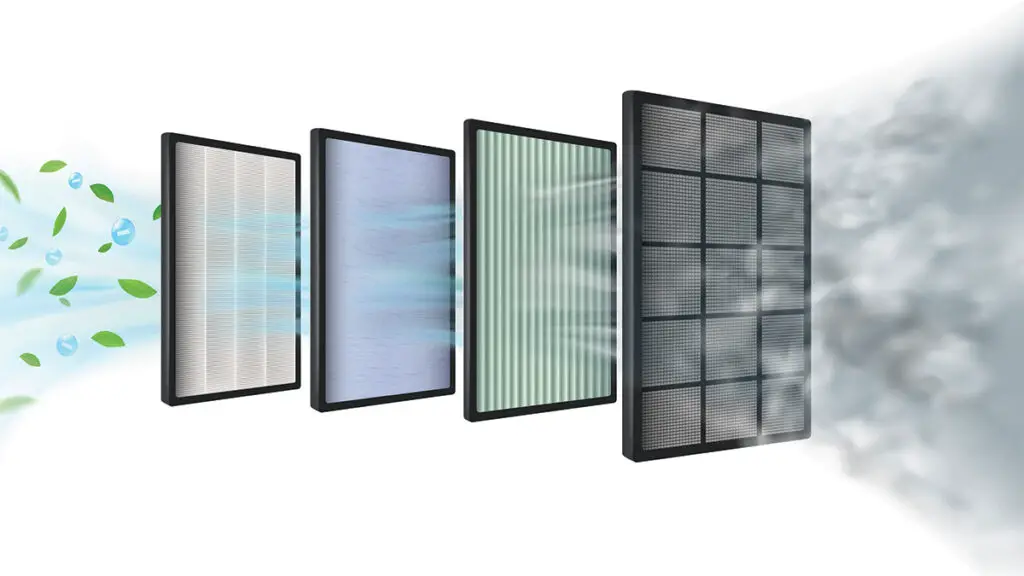
Understanding Air Purifier Filters
When it comes to air purifiers, filters are the most important component. Air purifier filters trap pollutants, allergens, and other harmful particles, preventing them from circulating into the air. There are two main types of filters: pre-filters and main filters.
Pre-filters
Pre-filters are the first line of defense in an air purifier. They capture larger particles such as dust, pet hair, and dirt. Pre-filters are usually made of foam or mesh and are washable. They help extend the main filter’s life by capturing larger particles before they reach the main filter.
Main filters
The main filters are the heart of the air purifier. They capture smaller particles such as pollen, mold spores, and bacteria. Several main filters include HEPA, activated carbon, and UV-C light filters.
- HEPA filters are the most common type of main filter. They are designed to capture 99.97% of particles as small as 0.3 microns. HEPA filters effectively trap allergens and pollutants, making them ideal for people with allergies or asthma.
- Activated carbon filters are designed to remove odors and chemicals from the air. They work by absorbing the pollutants into the filter material. Activated carbon filters effectively remove cigarette smoke, cooking odors, and volatile organic compounds (VOCs).
- UV-C light filters use ultraviolet light to kill bacteria and viruses. They effectively remove germs from the air, making them ideal for use in hospitals and other healthcare settings.
FAQs
How big of an air purifier do I need?
The size of the air purifier you need depends on the size of the room where you plan to use it. Look for an air purifier with a Clean Air Delivery Rate (CADR) that matches the room’s square footage, ensuring it can effectively purify the air in the space.
Does the size of an air purifier matter?
Yes, the size of an air purifier is important as it affects its efficiency and suitability for a particular room size. Larger purifiers are generally more effective in larger spaces, whereas smaller models are suitable for personal use or smaller rooms.
Should I oversize my air purifier?
Oversizing an air purifier can be beneficial as it can clean the air more effectively and often operate in a lower, quieter setting. This can benefit those with severe allergies. However, it’s also important to consider a larger unit’s energy consumption.
Is it better to have one large air purifier or multiple small ones?
Choosing one large air purifier or multiple small ones depends on the layout of your house or apartment and your specific needs. Small purifiers can be more effective for dispersed or multi-room coverage, while a single large purifier may be sufficient for an open floor plan.
Conclusion
Determining the appropriate size of an air purifier for your room is crucial to ensure its effectiveness in cleaning the air. As discussed earlier, the CADR rating, room size, and ACH are the three main factors to consider when selecting an air purifier. Using these metrics, you can determine the appropriate size of the air purifier for your room.
Remember, a larger air purifier with a higher CADR rating does not necessarily mean it is the best option for your room. It is important to consider the room size and ACH to ensure that the air purifier can effectively clean the air in your room.
When selecting an air purifier, it is also important to consider the type of filter used. HEPA filters are the most effective at capturing airborne particles, while activated carbon filters are best for removing odors and chemicals. Some air purifiers use UV-C light or ionizers to kill bacteria and viruses.
Selecting the right air purifier for your room ensures you breathe clean air. By considering the CADR rating, room size, and ACH, you can determine the appropriate size of the air purifier for your room. Additionally, considering the filter type can help you select the best air purifier.
- Kaviany P, Brigham EP, Collaco JM, Rice JL, Woo H, Wood M, Koehl R, Wu TD, Eakin MN, Koehler K, Hansel NN. Patterns and predictors of air purifier adherence in children with asthma living in low-income, urban households. Journal of Asthma. 2022 May 4;59(5):946-55.
- Delgado A, Flor H. Selection of the best air purifier system to urban houses using AHP. In2017 CHILEAN Conference on Electrical, Electronics Engineering, Information and Communication Technologies (CHILECON) 2017 Oct 18 (pp. 1-4). IEEE.




